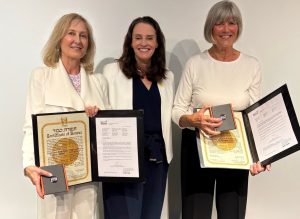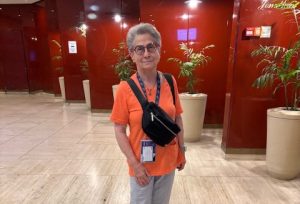Holocaust Education Week is a solemn occasion to reflect on unimaginable horrors and near destruction of the European Jewish community. One aspect that isn’t discussed as frequently is how these tragedies changed the trajectories for the careers of many survivors.
A few years ago, I introduced a distinguished historian, Benjamin Harshav, before his lecture about Marc Chagall. In presenting his bio, I mentioned that he had lived in Poland, the Soviet Union, Israel and the United States. I think I used the word “cosmopolitan.” Harshav muttered, “Cosmopolitan, shmosmopolitan. Hitler and Stalin shlepped me here and there.”
He was right, of course. Eastern European Jews did not get to know the globe on their own accord, but rather because they were pushed out from their homes by wars, revolutions, fascism and political crises. The sheer magnitude of the interruption of Jewish culture still escapes us. How many scientific discoveries could have been made? How many creative geniuses were killed? How many artistic masterpieces could have been created? It is also worth considering, even for those lucky enough to have survived, how many careers were shattered or simply ignored when they became anonymous refugees.
READ: CANADA’S NEW HOLOCAUST MONUMENT WAS NOT BUILT FOR CANADIAN WINTERS
Take, for example, music. An international project, Performing the Jewish Archive, uncovered the multitude of operatic pieces, songs, art and plays that were produced by Jewish refugees in the 20th century. In August, Australia’s Sydney Conservatorium presented – thanks to the work of ethnomusicologist Joseph Toltz – for the first time in 70 years, captivating concerts by Wilhelm Grosz, an Austrian Jewish composer. Wars, revolutions and cataclysms ended Grosz’s life prematurely and, before that, his career suffered a serious blow after arriving in the United States – a situation common to many refugees, especially those in creative professions.
Similarly, the works of demographer Yakov Leshchinsky have long been buried in obscurity. Leshchinsky was a triple refugee, fleeing to Germany in 1921 after the Russian Revolution, then to Poland in 1934 to escape Nazism, and finally from Poland to the United States in 1938. He should be considered one of the founding fathers of Jewish social science. Recently, University of Toronto sociologist Robert Brym translated Leshchinsky’s Yiddish-language study of Jewish workers in czarist Russia’s Pale of Settlement territory into English. Brym explains that Leshchinsky’s arguments for social integration of Jews were very much ahead of his time. In addition to scholarship, he also called for action. Like many of his peers, he did not separate scholarship from activism.
Another person who blurred the lines between academic research and public service was Albert Einstein. A professor at Berlin University, he informally educated Jewish refugees from eastern Europe who could not legally enrol in German universities. One of his auditors, Judah Leman, published an accessible summary of Einstein’s theory of relativity in Yiddish. With Einstein’s help, Leman succeeded in explaining complex theories to readers who were often banned from obtaining a formal education.
“Today, the book can help us not only understand the theory of relativity, but also give us a sense of the scope of knowledge of east European Jews in the 1920s,” said Jordan Chad, 23, a PhD student in neurophysics who translated and annotated Leman’s book.
I doubt that Einstein could imagine back when he was helping a refugee auditor of his class that he himself would be on the run 12 years later. Being a refugee influenced the way he produced scientific knowledge and the way he advanced our civilization. The same can be said of Leshchinsky, Grosz or Harshav. But I sincerely hope their stories will inspire us to learn to see the sparks of genius in refugees that end up in our country. After all, we know too well that we all pay the price when talent is ignored.
Author

Anna Shternshis is the Al and Malka Green professor of Yiddish Studies and director of Anne Tanenbaum Centre for Jewish Studies, University of Toronto.
View all posts







